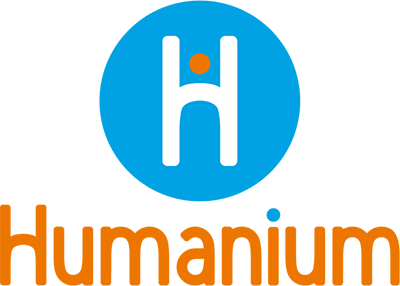Child sexual abuse material (CSAM) remains a serious concern in the Netherlands, with implications that extend well beyond its borders. The country’s advanced digital infrastructure and central role in global internet traffic have made it both a leader in combating online crime and a target for criminal networks. Consequently, the Netherlands has earned international recognition for its anti-CSAM efforts while also facing criticism for being a hub for hosting and distributing criminal content.
The Netherlands as a digital hub and a target for abuse
The Netherlands is one of Europe’s main digital hubs. Its dense network of data centres, high-speed connections, and business-friendly hosting environment have been major economic assets. However, this same infrastructure has also attracted ‘bulletproof’ or abuse-resistant service providers that facilitate the distribution of illicit CSAM. Recent reports (2023–2024) by government agencies and independent bodies confirm that Dutch servers still host a significant share of global CSAM removals.
Prevalence and emerging trends
The scale of online abuse affecting young people in the Netherlands is alarming. Nearly half of individuals aged 12 to 25 years report experiencing some form of online sexual abuse. Among the most severe threats is sextortion, in which perpetrators coerce victims into sharing sexual content or performing sexual acts under the threat of exposure (NL Times, 2025). Financial sextortion schemes targeting young boys are also on the rise (Financial Action Task Force, 2025).
Reports from European institutions, non-governmental organisations (NGOs), and Dutch authorities indicate that the Netherlands ranks among the top countries for hosting CSAM in the European Union (EU) and globally. In 2024, the Internet Watch Foundation (IWF) reported that the Netherlands hosted 29% of all global CSAM URLs (83,037 web pages). While this percentage represents a slight decline from the 33% recorded in 2023 (91,572 web pages), the Netherlands maintained its position as the leading EU country in CSAM hosting (Duboust, 2025; IWF, 2025).
The problem is growing across Europe. In 2024, over 62% of all CSAM detected worldwide was hosted on EU servers, up from 51% the year before. Even more concerning is the 380% surge in AI-generated CSAM, with nearly one-third of hashed images and videos depicting the most extreme forms of abuse, including rape and sadism (IWF, 2025).
The changing nature of CSAM threats
The CSAM landscape is changing rapidly, driven by new technologies and tactics. AI-generated CSAM, for example, is created without direct contact with victims, making it harder to detect or classify (IWF, 2025).

Encrypted and hidden platforms – like darknet sites, encrypted messaging apps, and decentralised hosting systems – add another layer of complexity, making abusive content harder to trace. Offenders are also using techniques such as frame-by-frame image editing to evade detection. On some Dutch-hosted forums, they even upload single frames instead of full images to bypass content filters.
Another emerging threat is Invite Child Abuse Pyramid sites, which use a pyramid-scheme-style model to distribute CSAM, encouraging users to share links widely to gain further access. The Netherlands has been identified as a significant host for such sites (IWF, 2025).
A further disturbing trend is the rise of self-produced sexual content by children. This includes sexual images and videos created by children using mobile phones or webcams and subsequently shared online (Lanzarote Committee, 2023; Rabia, 2023). Individuals who are not physically present may groom, mislead, or coerce these children into creating and sharing such material. According to the IWF, around 78% of all URLs flagged in 2022 contained such self-generated material. While children aged 11 to 13, especially girls, are the most frequently targeted, reports of cases involving children as young as 7 are increasing (Rabia, 2023).
“If you have a child, and they have a smartphone or a device that has a camera in it and is connected to the internet, then any child could be at risk of potentially generating those images.”
— Michael Tunks, IWF head of policy and public affairs (Rabia, 2023).
National and European legal and policy responses
Recognising the gravity of the issue, the Dutch Senate approved the Eradication of Online Child Pornographic Material (Administrative Law Approach) Act in early June 2024, which came into force on 1 July 2024. From that date, the Authority for the Prevention of Online Terrorist Content and Child Pornography (ATKM) has had the authority to compel Dutch hosting providers to promptly remove detected CSAM from their servers and to fine repeat offenders up to 10% of their annual turnover. This approach reflects the Netherlands’ commitment to aligning its strong digital infrastructure with its child protection priorities (Government of the Netherlands, 2024).
In the Netherlands, specialised police and prosecution units focus on prevention and victim identification. The country has also invested in awareness campaigns targeting children, parents, and professionals alike (Lanzarote Committee, 2023).
At the EU level, the proposed Regulation focuses on risk assessments, mitigation, detection orders, and an EU Centre, while the recast Directive would explicitly criminalise AI-generated CSAM. The regulation has sparked significant debate over privacy, human rights, and digital security. Initially, the Dutch government supported parts of the proposal, such as limiting detection to already identified content, but it pushed for safeguards to ensure compliance with EU human rights standards.
Later, both the government and opposition parties withdrew their support, citing human rights concerns. Civil society organisations have also expressed their worries about privacy and online safety (Sadid, 2024; Tar, 2024; van Daalen, 2023).
Furthermore, Dutch police, in collaboration with prosecutors and victim identification teams, have set up specialised units for dealing with cyber-enabled sexual offences. These units work with international partners, including Interpol’s International Child Sexual Exploitation database, to efficiently identify and remove illicit material (Lanzarote Committee, 2023; University of Nottingham Rights Lab, 2023).
In addition to criminal prosecution, Dutch law allows victims to pursue civil claims. The country has established confidential helplines such as Kindertelefoon, Slachtofferhulp Nederland, and CoMensha, which provide legal, psychological, and referral support. However, specialised care often faces limited resources and long waiting times (Broken Chalk, 2025). The country also offers technology-facilitated prevention and recovery programmes. For instance, Offlimits’ Stop it Now! helpline supports people with problematic sexual interests and those worried about someone else (Better Internet for Kids, 2025).
Prevention, support, and innovation
Sex education in the Netherlands is comprehensive and progressive. It is mandatory and starts in primary school at age 4, with age-appropriate content. In upper primary (ages 10–12), lessons go deeper into topics such as sexting, consent, and coercion. Programmes include Kriebels in je buik for primary school and Lang Leve de Liefde for secondary school.
Schools use government-endorsed, evidence-based programmes and toolkits developed alongside NGOs and public health agencies to help students, educators, and parents prevent and respond to sexual harassment and abuse (Education Profiles, 2024).
These national resources are complemented by web-based peer-to-peer campaigns, police outreach, and phone and online helplines, such as the Safer Internet Centre’s Digiraad, which focuses on prevention and offers accessible support for both survivors and at-risk children. Tech-driven prevention efforts are also gaining momentum. For example, PROTECH, developed by Tilburg University, is a project that helps individuals manage problematic online sexual behaviour using on-device detection and blocking tools, aiming to prevent escalation before abuse occurs (Tilburg University, 2024).
National campaigns like Don’t Look Away and international partnerships, including the Down to Zero Alliance and EU platforms, further strengthen the prevention of and response to exploitation. However, monitoring remains limited: only a fraction of victims are identified, and re-offending rates among perpetrators continue to be high. Better data collection, closer supervision, and specialised resocialisation programmes are urgently needed (Broken Chalk, 2025).
Ongoing challenges in tackling CSAM
Emerging forms of online sexual abuse are testing the effectiveness of the Netherlands’ legal and child protection frameworks. Victims coerced into creating self-generated content need appropriate, trauma-informed responses. At the same time, policymakers must balance effective detection with protecting fundamental rights. International cooperation and swift content removal are receiving more attention as offenders exploit cross-border gaps.
Some younger teens may face legal consequences for consensual sexting, and traumatised children whose images are shared online often deal with stigma, legal hurdles, and lasting psychological harm (Knipschild et al., 2025).
These challenges put a strain on authorities, who must protect children, hold offenders accountable, and navigate complex legal procedures. They also need to provide psychological and social support, making effective intervention and prevention an ongoing concern for families, professionals, and policymakers.
Looking forward: Key priorities for CSAM prevention
The Dutch experience shows that addressing CSAM in a major international internet hub requires a coordinated approach across multiple actors: governments, law enforcement, the judiciary, tech companies, NGOs, educators, and youth. The main priorities are:
- Keeping laws up to date: Legislators and regulatory bodies must ensure that Dutch laws, including the Penal Code and the new Eradication of Online Child Pornographic Material Act (effective January 2025), keep pace with technological developments such as AI and encrypted messaging, while defining procedural safeguards for detection, reporting, and prosecution.
- Supporting survivors: NGOs, social services, and healthcare providers should offer immediate and long-term care to survivors, alongside education initiatives to reduce the stigma associated with seeking psychological and legal assistance.
- Preventing abuse: Tech developers, educators, NGOs, and policymakers should lead the implementation of programmes that combine human support with digital solutions – such as PROTECH and Offlimits – across the EU.
- Collaborating across sectors: Strong partnerships among governments, the judiciary, tech companies, NGOs, educators, and youth, supported by international agreements, are essential. Collaboration should also include enhanced coordination with major tech and hosting companies in the Netherlands.
- Protecting rights: Regulators, courts, and civil society organisations should ensure all measures respect privacy, data protection, and due process while still enabling detection and support for victims. Ongoing monitoring of privacy and civil rights is important as surveillance capabilities expand.
- International cooperation: Strengthened cross-border mechanisms are needed to track offenders and speed up the removal of illegal content.

At Humanium, we are committed to protecting children’s rights and preventing online sexual abuse. By volunteering, donating, or becoming a member, you can support our mission to combat CSAM and raise awareness worldwide. Join us today and make a real difference.
Written by Or Salama
References:
Better Internet for Kids. (2025, March). Dutch Safer Internet Centre. Retrieved from Better Internet for Kids at https://better-internet-for-kids.europa.eu/en/sic/netherlands, accessed on August 15, 2025.
Broken Chalk. (2025). Child sexual exploitation in the Netherlands. Retrieved from Broken Chalk at https://brokenchalk.org/child-sexual-exploitation-in-the-netherlands/, accessed on August 15, 2025.
Duboust, O. (2025, April 25). Warnings issued as rising amount of child sexual abuse material hosted on websites in EU countries. Retrieved from Euronews at https://www.euronews.com/next/2025/04/25/warnings-issued-as-rising-amount-of-child-sexual-abuse-material-hosted-on-websites-in-eu-c, accessed on August 15, 2025.
Education Profiles. (2024, November 5). Comprehensive sexuality education: Netherlands. Retrieved from Education Profiles at https://education-profiles.org/europe-and-northern-america/netherlands/~comprehensive-sexuality-education, accessed on August 15, 2025.
Financial Action Task Force. (2025). Detecting, disrupting, and investigating online child sexual exploitation: Using financial intelligence to protect children from harm. Retrieved from the Financial Action Task Force at https://www.fatf-gafi.org/content/dam/fatf-gafi/reports/Online%20Child%20Sexual%20Exploitation%20Report.pdf, accessed on September 3, 2025.
Government of the Netherlands. (2024, June 5). Authority may require hosting companies to remove online child sexual abuse material from servers. Retrieved from the Government of the Netherlands at https://www.government.nl/latest/news/2024/06/05/authority-may-require-hosting-companies-to-remove-online-child-sexual-abuse-material-from-servers, accessed on August 15, 2025.
Internet Watch Foundation. (2025, April 23). Charity raises alarm over surge in level of child sexual abuse imagery hosted in EU. Retrieved from Internet Watch Foundation at https://www.iwf.org.uk/news-media/news/charity-raises-alarm-over-surge-in-level-of-child-sexual-abuse-imagery-hosted-in-eu/, accessed on August 15, 2025.
Knipschild, R., Covers, M., & Bicanic, I. A. E. (2025). From digital harm to recovery: A multidisciplinary framework for First Aid after Online Sexual Abuse. Retrieved from PMC at https://pmc.ncbi.nlm.nih.gov/articles/PMC11869328/, accessed on August 15, 2025.
Lanzarote Committee. (2023, May 25). Factsheet – The Netherlands: The protection of children against sexual exploitation and sexual abuse facilitated by information and communication technologies (ICTs): Addressing the challenges raised by child self-generated sexual images and/or videos (CSGSIV). Retrieved from the Council of Europe at https://rm.coe.int/factsheet-netherlands-the-protection-of-children-against-sexual-exploi/1680acde93, accessed on August 15, 2025.
NL Times. (2025, May 28). Half of Dutch youth face online sexual abuse “epidemic,” including sextortion, grooming. Retrieved from NL Times at https://nltimes.nl/2025/05/28/half-dutch-youth-face-online-sexual-abuse-epidemic-including-sextortion-grooming, accessed on August 15, 2025.
Rabia, A. (2023, June 8). Child sexual abuse material: Why is the Netherlands a web hosting ‘hotbed’? Retrieved from Anadolu Agency at https://www.aa.com.tr/en/europe/child-sexual-abuse-material-why-is-the-netherlands-a-web-hosting-hotbed-/2917889, accessed on August 15, 2025.
Sadid, L. (2024, November 10). Netherlands opposes latest EU child abuse detection regulation. Retrieved from Brussels Morning at https://brusselsmorning.com/netherlands-opposes-latest-eu-child-abuse-detection-regulation/57160/, accessed on August 15, 2025.
Tar, J. (2024, October 1). Dutch avoid endorsing Hungary’s approach to EU child sexual abuse regulation. Retrieved from Euractiv at https://www.euractiv.com/section/tech/news/dutch-oppose-hungarys-approach-to-eu-child-sexual-abuse-regulation/, accessed on August 15, 2025.
Tilburg University. (2024, February 13). Preventing and Reducing Child Sexual Abuse Material (CSAM) use through On-device Technology (PROTECH). Retrieved from Central Committee on Research Involving Human Subjects at https://onderzoekmetmensen.nl/en/trial/56554, accessed on August 15, 2025.
University of Nottingham Rights Lab. (2023, September). Legal and institutional responses to the online sexual exploitation of children: The Netherlands country case study. Retrieved from the University of Nottingham Rights Lab at https://www.nottingham.ac.uk/research/beacons-of-excellence/rights-lab/resources/reports-and-briefings/2023/october/legal-and-institutional-responses-to-the-online-sexual-exploitation-of-children-the-netherlands-country-case-study.pdf, accessed on August 15, 2025.
van Daalen, O. (2023, April 22). Fundamental rights assessment of the framework for detection orders under the CSAM proposal. Retrieved from the Institute for Information Law (IViR), University of Amsterdam at https://www.ivir.nl/publicaties/download/CSAMreport.pdf, accessed on August 15, 2025.


